1. Introduction
On August 27, 2019, Costco opened its first store in China. On that day, the store sold out of its products because of the unexpected consumer enthusiasm and even had to close early [1]. From then on, several hot tags related to Costco exist on social media in China. As a new mover, there are not many pieces of research about the business of Costco in China, especially the effect of cultural background on its Chinese customers.
The concentration of the case study is how the consumer behavior culture, especially the culture in current China, makes Chinese consumers behave differently from US consumers. Costco, as a good old wholesale club in the US, and also a new mover in the Chinese market, reflects the difference. The analysis in this essay is based mainly on a 200-participant survey of Costco consumers, and also includes some evaluation of the social media events around Costco.
There are two objectives for this research. First, it provides some suggestions for multinational enterprises that are willing to move into China. For instance, based on the specific feature of Chinese consumers, the strategy for the enterprises to brand and promote themselves. Second, the research also explores how consumer behaviors reflect contemporary culture.
2. Methodology
2.1. Research Design
This paper adopted a questionnaire, the survey of Costco Consumers was published by the platform, https://www.wjx.cn, which also provided the sampling services: it helped sift 211 respondents who are customers of Costco.
In the questionnaire, the respondents were asked to answer 14 multiple choice questions: eight questions about their personal information; six questions about the shopping experience in Costco. And one subjective short answer about their view of Costco.
Besides the questionnaire, this essay also reviewed some social media events about Costco in the view of contemporary culture.
2.2. Survey Results
2.2.1. Consumer Profile
Now, Costco opened eight stores in different cities in China: Beijing, Shanghai, Guangzhou, Shenzhen, Nanjing, Suzhou, Hangzhou, and Ningbo. Four of these cities, Beijing, Shanghai, Guangzhou, and Shenzhen are known as the cities with the strongest economic power. Based on the result of the survey, 199 out of 211 of the respondents are from Shanghai, the first city in China that has a GDP above 2,000,000,000,000 CNY [2].
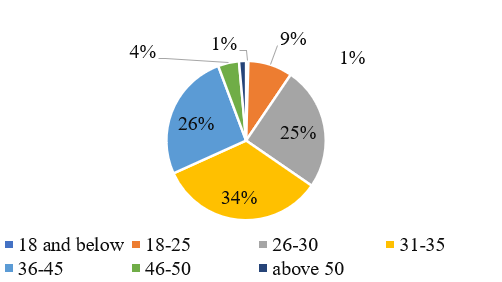 For the age scale of the respondents, most of them are 26-45-year-old working-age adults, as can be seen in Figure 1. As for the career, 94% of the consumers are employed or own their enterprise. The rest 6% are students or homemakers. In terms of marriage/family status, 73% of the respondents have spouses and kids; 45% of them are single persons with no kids; 5% of them are married with no kids. Only one of the consumers is single and kid-bearing.
For the age scale of the respondents, most of them are 26-45-year-old working-age adults, as can be seen in Figure 1. As for the career, 94% of the consumers are employed or own their enterprise. The rest 6% are students or homemakers. In terms of marriage/family status, 73% of the respondents have spouses and kids; 45% of them are single persons with no kids; 5% of them are married with no kids. Only one of the consumers is single and kid-bearing.
Figure1: Age.
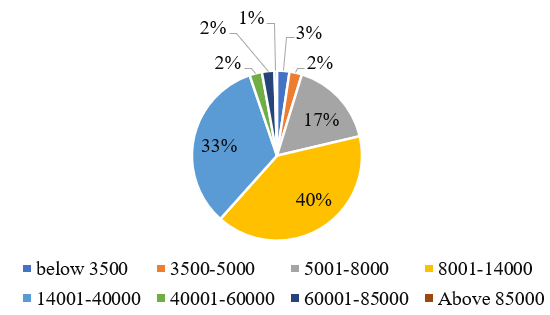 Based on the data from the National Bureau of Statistics, the average income of Chinese urban private enterprise employees is 62,884 CNY per year or 5240 per month [3]. More than 70% of Costco Consumers have income that is slightly above average (Figure 2).
Based on the data from the National Bureau of Statistics, the average income of Chinese urban private enterprise employees is 62,884 CNY per year or 5240 per month [3]. More than 70% of Costco Consumers have income that is slightly above average (Figure 2).
Figure 2: Personal income level (CNY).
Speaking of respondents’ experiences of living overseas, there is an interesting phenomenon: shopping at wholesale stores is an American-origin lifestyle, especially in comparison to traditional Chinese shopping customs. Generally speaking, traditional Chinese supermarkets do not sell giant-size products and large bundles. In an intuitive sense, most consumers should have lived abroad and been affected by western culture. However, there are only 27% of consumers used to live overseas; none of them lived overseas for more than 10 years.
2.3. Consumption Habits/ Customs
2.3.1. Reason for Shopping in Costco
For the reason for shopping, 84% of the consumers are shopping for their families; 14% of them are shopping for their single life. There is a detail, however, in the reason for shopping at Costco: purchasing agent. This is a unique phenomenon in the Chinese market: some people would purchase some products from Costco and then resell the products through social media or some online paths to others.
2.3.2. The Way of Shopping
Referring to the “purchasing agents”, 5% of the consumers are shopping in the way called “sharing order”. Sharing order means that some consumer purchase from the purchasing agents or their friends rather than the store. This type of shopping is not found in the US market.
2.3.3. The Most Popular Type of Products
In the United States, the top five best sellers of Costco’s ranking are bath tissue, rotisserie chicken, bacon, hot dogs, and gas [12]. Similarly, the most favorable products in the cart of Chinese customers are food and groceries. However, gas does not exist in the list of the most favorable product for Chinese customers. It reflects a difference in lifestyle: Chinese people rely less on cars. Also, parking lots are crowded in most cities because of the shortage of space. Furthermore, the shortage of space may also be a challenge for wholesale clubs like Costco for the siting of new stores.
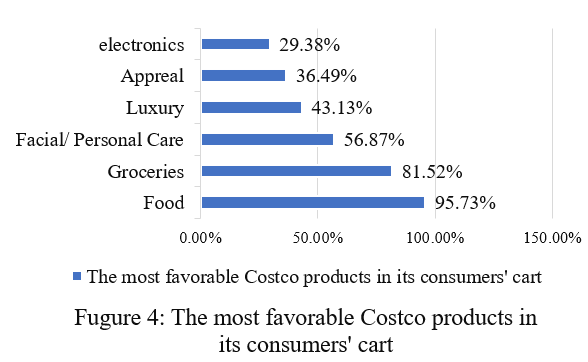
Figure 3: The most favorable Costco products in its consumers’ cart.
In Figure 3, 56.87% and 43.13% of the consumers prefer facial, personal care products, and luxuries, which reflects the target customers of Costco: the consumers who have enough money for purchasing unnecessaries.
2.3.4. Spending Per Purchase
As shown in Figure 4, there are 43.6% of consumers spend 501 to 1000 CNY per purchase, and 42.18% of the consumers spend more than 1000 CNY. Only 14.22% of the consumers spend less than 500 per purchase.
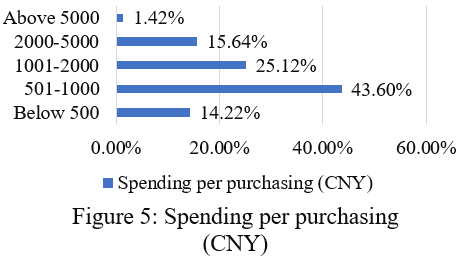
Figure 4: Spending per purchase (CNY).
2.3.5. Access to Information
This survey also researched the preference of the customers for accessing information. Significantly, Chinese consumers have a preference to access information from new media (Figure 5).
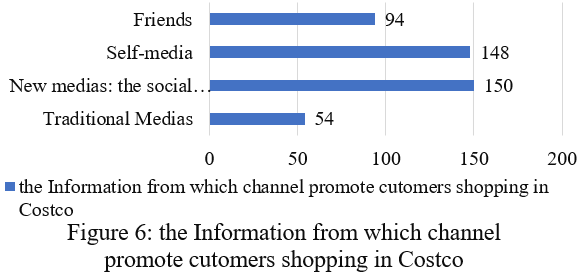 Figure 5: The Information from which channel promotes customers shopping at Costco.
Figure 5: The Information from which channel promotes customers shopping at Costco.
2.3.6. Views of the Membership
In China, membership is the most topical part of the business model of Costco. In comparison to US consumers, Chinese consumers are more sensitive to spending; especially spending a sum of money before they purchase anything. On balance, most consumers are satisfied with their Costco membership. In this survey, 69% of the consumers approved of the value of a Costco membership. 30% of consumers think the membership is overvalued, but they still choose to pay for it. Only 1% of consumers think that a Costco membership is not a good buy.
2.3.7. Subjective Views
The survey asked each consumer to describe their subjective views of Costco. Most of the answers concentrated on price and quality, some other answers, however, are related to contemporary cultures. This research would analyze them with specific events related to Costco.
3. Discussion
3.1. Analysis of the Survey Result
The largest difference between Costco in the United States and the Chinese is its brand positioning. “The fact that it can deliver all of these key performance attributes, and also rank highest on providing low prices, is an enormous accomplishment, and earns the chain renowned customer loyalty.” Costco leads mass grocers When looking at mass grocers such as Walmart, Sam's Club, Target, and Costco, Market Force found similar results” [7]. In the United States, Costco has a competitive price advantage, however, in China, many online platforms provide lower prices. For instance, in September 2019, Biyao, an online Customer-to-Manufacturer shopping platform, published an activity: if anyone finds a product in Costco that is cheaper than a similar product sold by Biyao and has evidence, he or she could receive a prize that is 10 times the price difference [8]. Similar to McDonald’s in the Soviet Union or 1990s China, Costco is more than a place for shopping, it is an American culture theme park, and the features of the customers could be evidence.
Based on the survey result, 30% of the consumers state that their membership of Costco is overvalued, but they would accept the premium. These consumers are not price-sensitive, good price is not only the reason for them to shop at Costco. 94% of the consumers are employed or business owners and 70% of them have incomes above the average, which means that they are the group of consumers that could afford price premiums. In Figure 4, a survey about their spending, above 85% of them spend more than 500 CNY for a one-time purchase. As a reference, in 2022, a Foxconn (the main producer of Apple’s products, established most of its firms in China) assembler earned about 20-29 CNY per hour [9]; in comparison, Costco consumers have a consumption of high level.
In addition, only 1% of consumers are above 50 years old, and 68% of them are less than 35 years old, which means most of them are the generation who grew up in the cultural output from the western world. From the subjective feedback, more than 30 of the feedback label Costco as fashionable; a large part of the consumers highlighted imported goods, and one feedback highlighted the foreign consumers there. In the United States, Costco is a general wholesale club that provides products with good value, however, in China, shopping at Costco is a fashionable lifestyle. The label of fashionable Costco is reflected in social media. For instance, more than 70% of the consumers fed back that they decided to shop at Costco because they got information from social media, including the threads from the social media account of magazines and journals, and the recommendations from KOLs.
Costco does not advertise, which is a significant point in the operation of Costco in the United States. Its membership screened its target consumers. In China, however, things are different. Since shopping in Costco is a fashion, promotion, branding, and marketing are necessary. For instance, from Figure 5, there are 70.14% of consumers state that the information from self-media is the key reason why they decide to shop at Costco. The KOLs on social media such as Weibo and Xiaohongshu share nice photos, and the best buy products list, helping the branding of Costco: it is a fashionable lifestyle.
Another view is it seems that some consumers purchase at Costco not because of their needs. First, there is some subjective feedback stating that the product sizes are so large and not suitable for Chinese families. Though the wholesale-size products are not what they need, some consumers shop by order sharing. They contact the purchasing agents to buy the products that were split from large packages and bundles or look for companions from social media to purchase and split the products together. One reason why is that their purpose in purchasing is to chase a fashion, and get the same product as the KOLs rather than consume necessaries.
There are also differences in the preference for products between Chinese consumers and US consumers. The top five best sellers of Costco in the United States are toilet tissue, rotisserie chicken, bacon, hot dogs, and gas. The three best buys, in the view of Chinese consumers in this survey, however, are food groceries, and fiscal/personal care products. Besides, there are 43.13% of consumers think luxuries are their favorite products while shopping at Costco. In short, there are more nonessentials and fewer necessities in the shopping list of Chinese Costco consumers.
In conclusion, in the cultural background of China, Costco is a symbol of a fashionable lifestyle. The consumer profile of Chinese Costco consumers is the people generation lower than 50 years old, currently employed or owning a business, with above-average income, and living in large cities. In comparison to US consumers, they purchase more nonessentials.
3.2. Analysis of the Story of Costco in China
The fervor around Costco’s first store in China is so similar to the story of McDonald’s in the USSR, which is another symbol of American culture. “Thousands of people would be willing to stand out in the cold for hours on end just for a Big Mac”, the first McDonald’s store even set the record for most customers on its first day of opening by serving over 30,000 hungry punters [10]. For people who were living in USSR, McDonald’s provided them with a glimpse of what life was like in the United States or even the glamorous western world where they have never set foot. Based on the survey result, 73% of Costco consumers do not have the life experience of living overseas, this may be a big reason for them to accept the membership fee in their opinion, have a premium, and take photos with fashionable outfits behind the Costco store to pretend they are in the imagined Los Angeles (while there are more tired parents than fashion influencers behind the real Costco store in Los Angeles). The fervor is also a reflection of the influence of American culture on Chinese people.
In summary, the fervor around Costco stores in China is at least partially originating from the imagination of the American lifestyle and envisioning American culture.
4. Insight: The Story of Costco in China
4.1. The First Opening Up
The first opening up of Costco is a piece of big news. On August 27, 2019, Costco opened its first store in China, Shanghai [1]; it was so fleeting that it had to close early, is it because of the quality of its products? Draw references from history, the answer is no. Just like McDonald’s and Pepsi mean more than burgers and soda in USSR [4], Costco Wholesale store represented the American lifestyle and has its cultural attributes.
Based on the survey result on subjective views, 24 consumers made it plain that one of the reasons why they consume at Costco is because Costco has imported products, and it is a fashion. In comparison, shopping in wholesale stores is daily life for American families; as an international business in China, however, American wholesale stores and the American products it sells have cultural importance.
4.2. Social Media Events
“On Xiaohongshu, a fashion and lifestyle app often referred to as China’s Instagram, users share tips on how to pose for photos in front of the big box store so it looks as if they are in Los Angeles” [5]. In October 2021, a new fashion trend in Chinese social media was so striking that some foreign media covered it. As CNN reported, in 2021 fall, lots of Chinese influencers flocked to the store of Costco in Shanghai to take pictures. Most of their pictures included Costco’s huge carts, the models wearing the US style crop tops or bright-color casual clothes, big-size pizzas, cola, the lawn, and the blue sky; and once these pictures are posted to social media, they would be tagged “pretend to be the Los Angles”. Twitter user @giorgiomomurder collected some of those pictures and posted them in a thread. The thread, at last, received 11 thousand likes and a lot of comments [6]. In both informal discussions and formal news reports, such as the Twitter thread comments and the business comment articles, people shared guesses on the motive of these influencers. Logically, and based on the survey results, most of these guesses are not thoroughly right.
For instance, @giorgiomomurder thinks that “one person’s banality is another’s Instagram shot” [6]. In other words, the reason why Chinese influencers took photos at Costco and saw it as a fashion is just because of the novelty. However, it cannot explain why there is no other store that makes the Chinese influencers so crazy, while countless foreign brands are coming into China every day. Gan and Steve, the CNN contributors, have different ideas. In their article Why Chinese influencers are flocking to a Costco in Shanghai (and no, it’s not for the discounts), they stated that this event is the result of China’s shut off from the world because of the pandemic; Chinese people longed for travel abroad, but they had to stay at China because of the limitation of outbound flights. Based on the result of the survey, however, this point of view is not right. No consumer in this survey has long-term experience of living overseas. Only 27% of them have short-term experience living abroad, the others do not have any abroad-living experience. There is no evidence to approve the motive of these influencers is longing the travel to USWC.
To trace further, an underlying reason is the cultural background of Costco. As a wholesale membership club originating from the United States, Costco naturally has cultural importance: it represented the US lifestyle. Its target customers in China, are the group of consumers that live in big cities, have jobs or own businesses, and whose salaries are slightly above the average. Most of them do not have experience living overseas, but the American culture penetrated their life already. When they take photos to pretend they are in Los Angles, pay for the price premium of the products, especially the imported products, and pay for the price premium of the membership, they are purchasing a fantasy American-style life.
5. Suggestions
Based on above analysis, the cultural attribute is an important point for international enterprises to operate their international business in China, especially in the early stage. For international enterprises that engage in retail trade, consumer nondurables, and consumer durables, branding their products, or the enterprises themselves as an attractive lifestyle with specific cultural attributes.
For the further stage, having authentic American merchandise coupled with local and regional favorites is an approved strategy. In the case of Costco, Costco chose Richard Chang, a Chinese-American who was born in Taiwan as its Taiwan chief (who is now also Senior Vice President of Costco Asia) [11]. As a result, consumers could purchase both the popular American-style products and Taiwan’s local best-seller products, such as braised beef noodle soup in Costco, which brings Costco success to its Taiwan business [1].
The results of this paper are based on the real feedback of Costco consumers, but perhaps there are some biases because of the small sample size (only 211 feedbacks). Also, now, Costco opened 8 stores in 8 different cities; however, in this survey, 199 out of 211 feedbacks are from Shanghai. The deviation of the location of survey participants may also bring some biases.
6. Conclusion
Based on the case of Costco China and the survey of 211 consumers, cultural attributes of foreign brands are important for attracting Chinese consumers, especially the group of consumers with salaries that is above the average level. Though most Chinese consumers of Costco do not have any experience of living overseas, they have interests and fervor for American life. Multinational enterprises are expected to be benefited from their cultural attributes that are naturally exotic for Chinese consumers. For further development, the adoption of Chinese conditions, for instance, the regional products sold in Costco, is also an applicable strategy.
This paper provides a reference for multinational enterprises, especially enterprises of retail trade, consumer nondurables, and consumer durables to think about benefiting from their cultural attributes.
References
[1]. Cheng, A.: Think the fervor around Costco's first store in China is fleeting? think again. Forbes. Retrieved November 15, 2022, from https://www.forbes.com/sites/andriacheng/2019/08/28/why-the-fervor-behind-costcos-first-china-store-wont-be-short-lived/?sh=4d0ecf0415ab
[2]. National Bureau of Statistics. The twelfth report on the social and economy after the 18th National Congress of the Communist Party of China. Open Government Information. Retrieved December 11, 2022, from http://www.stats.gov.cn/xxgk/jd/sjj d2020/202209/t20220929_1888803.html
[3]. National Bureau of Statistics. The analysis of the urban employed by the senior officer of the Population and Employment Statistics Division in the National Bureau of Statistics. Open Government Information. Retrieved December 11, 2022, from http://www.stats.gov.cn/xxgk/jd/sjjd2020/202205/t20220520_1857633.html
[4]. Alexander, R.: American Fast Food as Cultural and Politics: The Introduction of Pepsi and McDonald’s into the USSR. [Master’s thesis, University of Oregon] Department of History. Retrieved December 30, (2013). http://hdl.handle.net/1794/13299
[5]. Gan, N. & Steve George.: Why Chinese influencers are flocking to a Costco in Shanghai (and no, it’s not for the discounts). CNN Travel. Retrieved January 3, 2023 from https://www.cnn.com/2021/10/29/china/chinese-influencers-costco-mic-intl-hnk/index.html
[6]. Giorgio.: [@giorgiomomurder]. Chinese influencers pretending to be in Los Angeles by taking pictures at the Shanghai Costco. [Tweet]. Twitter (2021). https://twitter.com/giorgiomomurder/status/1452856391803146249?ref_src=twsrc%5Etfw%7Ctwcamp%5Etweetembed%7Ctwterm%5E1452856391803146249%7Ctwgr%5E4b6de7dea9e866f3c88f69f28ec391cb13766783%7Ctwcon%5Es1_&ref_url=https%3A%2F%2Fnews.yahoo.com%2Fchinese-influencers-head-costco-pretend-222237940.html
[7]. Wegmans is Top Supermarket, and Costco is the Favorite Mass Grocer - According to Market Force Consumer Survey. Marketing Weekly News, 177 (2010). https://link.gale.com/apps/doc/A219269659/STND?u=albu78484&sid=ebsco&xid=8cdbabc2
[8]. Li, P.: Why does Biyao challenge Costco?. China Newsweek. (2019). Retrieved January 3rd, 2023 from https://mp.weixin.qq.com/s/tBDHFc0XymTo-YmPaABepQ
[9]. Foxconn Online Recruiting Center. (2022, December 10). Assembler hiring. Retrieved December 4, 2022 from https://foxconn-job.cn/operator/?type=detail&id=92
[10]. Egorov, B.: How the USSR’s first McDonald’s drove Russians crazy. Russia Beyond. Retrieved January 9, 2023 from https://www.rbth.com/history/329911 -ussrs-first-mcdonalds
[11]. CEO Magazine.: From the basketball court to the C-suite: Richard Chang. Retrieved January 10, 2023, from https://www.theceomagazine.com/ex ecutive-interviews/retail-wholesale/from-the-basketball-court-to-the-c-suite-richard-chang/
Cite this article
Wang,Z. (2023). How Does the Cultural Background Affect the International Business: A Readable Case Study of Costco in China Mainland. Advances in Economics, Management and Political Sciences,19,135-143.
Data availability
The datasets used and/or analyzed during the current study will be available from the authors upon reasonable request.
Disclaimer/Publisher's Note
The statements, opinions and data contained in all publications are solely those of the individual author(s) and contributor(s) and not of EWA Publishing and/or the editor(s). EWA Publishing and/or the editor(s) disclaim responsibility for any injury to people or property resulting from any ideas, methods, instructions or products referred to in the content.
About volume
Volume title: Proceedings of the 2023 International Conference on Management Research and Economic Development
© 2024 by the author(s). Licensee EWA Publishing, Oxford, UK. This article is an open access article distributed under the terms and
conditions of the Creative Commons Attribution (CC BY) license. Authors who
publish this series agree to the following terms:
1. Authors retain copyright and grant the series right of first publication with the work simultaneously licensed under a Creative Commons
Attribution License that allows others to share the work with an acknowledgment of the work's authorship and initial publication in this
series.
2. Authors are able to enter into separate, additional contractual arrangements for the non-exclusive distribution of the series's published
version of the work (e.g., post it to an institutional repository or publish it in a book), with an acknowledgment of its initial
publication in this series.
3. Authors are permitted and encouraged to post their work online (e.g., in institutional repositories or on their website) prior to and
during the submission process, as it can lead to productive exchanges, as well as earlier and greater citation of published work (See
Open access policy for details).
References
[1]. Cheng, A.: Think the fervor around Costco's first store in China is fleeting? think again. Forbes. Retrieved November 15, 2022, from https://www.forbes.com/sites/andriacheng/2019/08/28/why-the-fervor-behind-costcos-first-china-store-wont-be-short-lived/?sh=4d0ecf0415ab
[2]. National Bureau of Statistics. The twelfth report on the social and economy after the 18th National Congress of the Communist Party of China. Open Government Information. Retrieved December 11, 2022, from http://www.stats.gov.cn/xxgk/jd/sjj d2020/202209/t20220929_1888803.html
[3]. National Bureau of Statistics. The analysis of the urban employed by the senior officer of the Population and Employment Statistics Division in the National Bureau of Statistics. Open Government Information. Retrieved December 11, 2022, from http://www.stats.gov.cn/xxgk/jd/sjjd2020/202205/t20220520_1857633.html
[4]. Alexander, R.: American Fast Food as Cultural and Politics: The Introduction of Pepsi and McDonald’s into the USSR. [Master’s thesis, University of Oregon] Department of History. Retrieved December 30, (2013). http://hdl.handle.net/1794/13299
[5]. Gan, N. & Steve George.: Why Chinese influencers are flocking to a Costco in Shanghai (and no, it’s not for the discounts). CNN Travel. Retrieved January 3, 2023 from https://www.cnn.com/2021/10/29/china/chinese-influencers-costco-mic-intl-hnk/index.html
[6]. Giorgio.: [@giorgiomomurder]. Chinese influencers pretending to be in Los Angeles by taking pictures at the Shanghai Costco. [Tweet]. Twitter (2021). https://twitter.com/giorgiomomurder/status/1452856391803146249?ref_src=twsrc%5Etfw%7Ctwcamp%5Etweetembed%7Ctwterm%5E1452856391803146249%7Ctwgr%5E4b6de7dea9e866f3c88f69f28ec391cb13766783%7Ctwcon%5Es1_&ref_url=https%3A%2F%2Fnews.yahoo.com%2Fchinese-influencers-head-costco-pretend-222237940.html
[7]. Wegmans is Top Supermarket, and Costco is the Favorite Mass Grocer - According to Market Force Consumer Survey. Marketing Weekly News, 177 (2010). https://link.gale.com/apps/doc/A219269659/STND?u=albu78484&sid=ebsco&xid=8cdbabc2
[8]. Li, P.: Why does Biyao challenge Costco?. China Newsweek. (2019). Retrieved January 3rd, 2023 from https://mp.weixin.qq.com/s/tBDHFc0XymTo-YmPaABepQ
[9]. Foxconn Online Recruiting Center. (2022, December 10). Assembler hiring. Retrieved December 4, 2022 from https://foxconn-job.cn/operator/?type=detail&id=92
[10]. Egorov, B.: How the USSR’s first McDonald’s drove Russians crazy. Russia Beyond. Retrieved January 9, 2023 from https://www.rbth.com/history/329911 -ussrs-first-mcdonalds
[11]. CEO Magazine.: From the basketball court to the C-suite: Richard Chang. Retrieved January 10, 2023, from https://www.theceomagazine.com/ex ecutive-interviews/retail-wholesale/from-the-basketball-court-to-the-c-suite-richard-chang/









